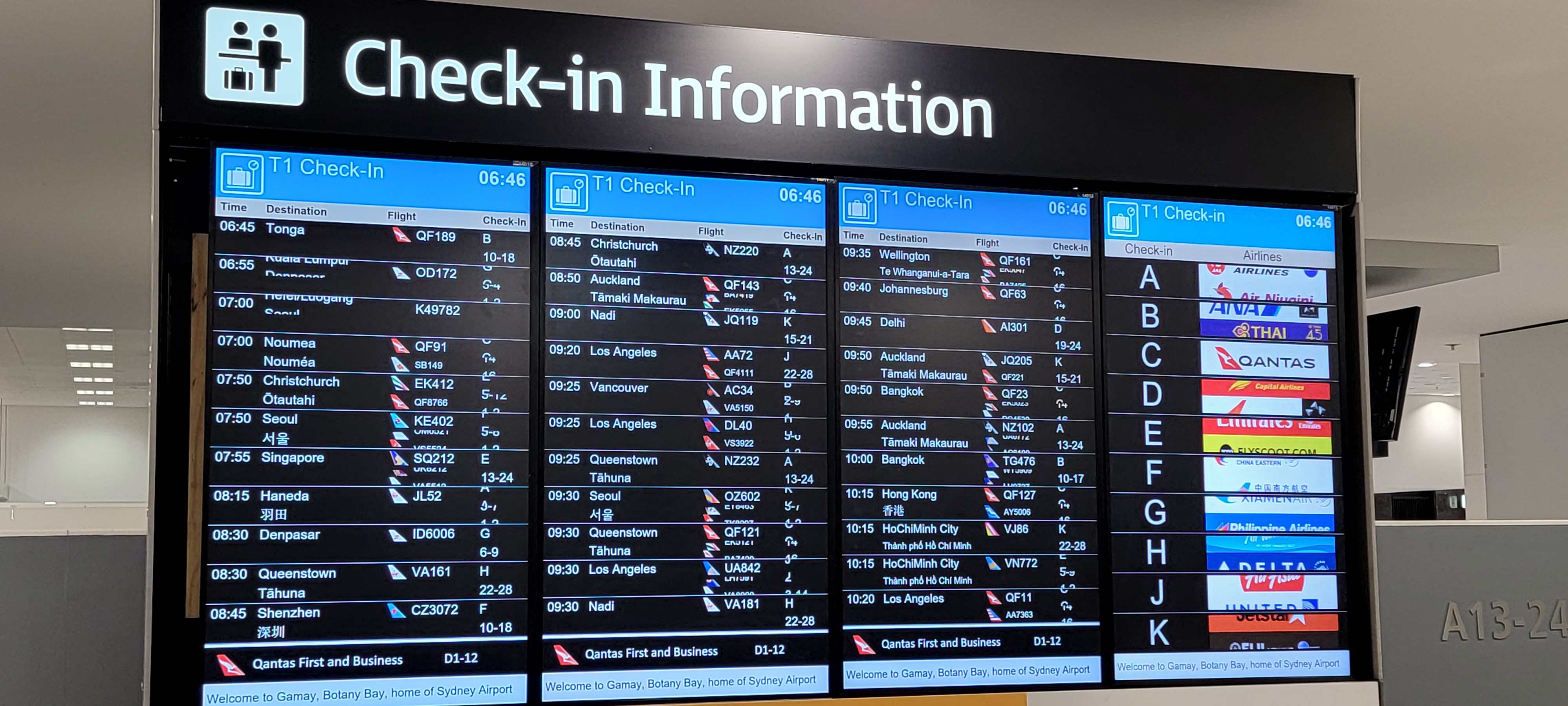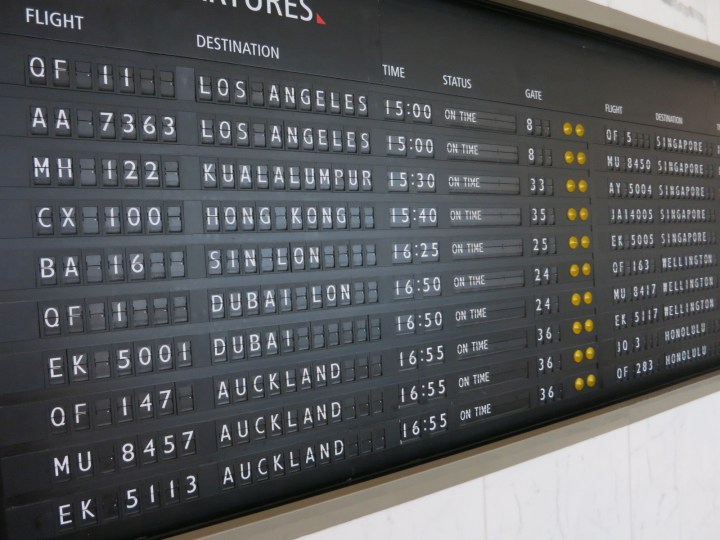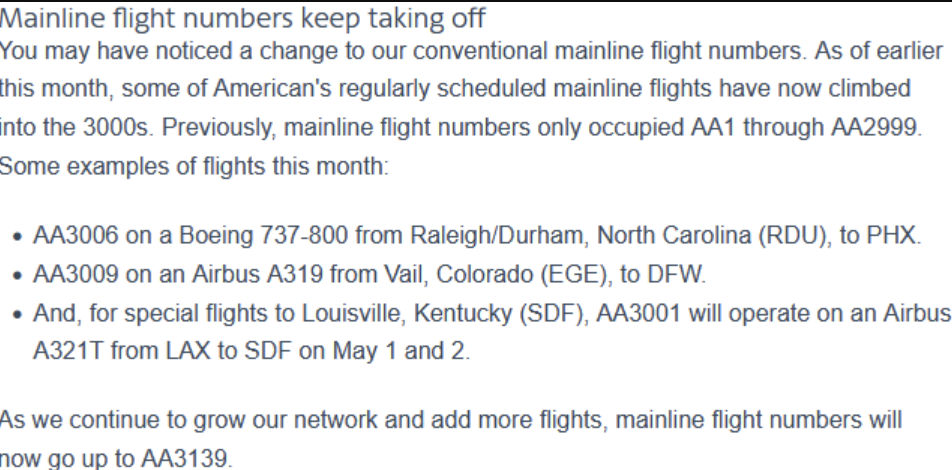Airlines use up to four digits for flight numbers. That means they can have up to 9,999 flights (since there’s no flight zero), and no one comes close. American Airlines operates around 6,700 daily flights including its American Eagle regional services. So they should have plenty of room to grow!
Except they don’t. American Airlines, Delta, and United are running out of flight numbers, and nobody knows what to do about it.

In fact, this topic came up at an American Airlines employee meeting last week. After the airline’s second quarter earnings call, top executives talk to employees and take questions. A worker in IT raised it: “We’re running out of flight numbers. Are we looking at 5-digit or some other solution?”
The airline’s Senior Vice President or Network Planning Brian Znotins laid out the challenge and what they’re doing about it.
- They actually have more than 9,999 flights that they want to put their flight number on
- That’s because they have partners where they codeshare. They want to sell American Airlines ‘flights’ from Doha to cities in India and Pakistan, for instance. They want to sell American Airlines flights that are operated by Alaska Airlines.
Here’s the full answer, along with how they triage the problem – for instance by assigning the same flight number to more than one flight a day (although that means they need for it to be flights that would never both be in the air at the same time, such as where the same plane is used and can’t reasonably be substituted):
With consolidation in the industry, airlines have been running out of flight numbers. …[Codeshares have caused us to be] running out of flight numbers. We have more than 9,999 flights that we would like to go out and number. And so ways to save flight numbers, we actually have a model that goes and conserves flight numbers so that we can continue to add where we want to. Our regional partners…we have to add flight number ranges for that.
Believe it or not there’s a whole body of work that revolves around flight numbers and it’s not just 1989 to Kansas City for the Super Bowl.
Needless to say, the actual answer to the question is we run through-flights and we also do something called an ‘out and back flight number’ where a flight going to a station will have the same flight number as the return flight back to the hub, and that’s also so we can conserve flight numbers.
Now on the technical side we’re working in systems that originated in the 60s. We have two-letter airline codes and we have four-digit flight numbers. You think of this as like a Y2K issue if you remember that. It is immensely difficult to find ways to add another digit to this field, and it’s really only a problem for three airlines in the world. The remaining airlines don’t run into this issue.
So for us, and other two big competitors, we found workarounds for it. And I think the technology investment would be too great…

The computer systems airlines use are built on top of systems that are built on top of systems that date back sixty years. So it’s hard to adjust for this. And, as with Y2k, older systems economized on data size for storage and processing reasons. Abbreviations were used. For instance that’s how United Airlines elite status levels got their names, “1K” was used instead of 1000K or 100,000 mile status because they only had two digits to designate it. It was meant as an internal tag, not to be public with customers, but it eventually stuck.
Back in April, American Airlines shifted their flight numbers so that mainline flights extended not only from 1 to 2,999 but out to 3,139.

They also still have fun with flight numbers for instance running flight 1776 between Philadelphia and Boston; flight 1492 to Columbus; AAA777 to Las Vegas; and flight 420 to Denver.
And American Airlines CEO Robert Isom chimed in on the answer to the question about limits to flight numbers noting that “we have aspirations to be a lot bigger, so over time let’s put that down as a project.”


Make the last two digits Alphameric, problem solved
IE AA39DB
Alphanumeric is the obvious answer.
As in that popular Delta routing…
DL FUFU
Come to think of it, that can be applied to all Delta flights via ATL.
I’ve been on more 1492 than the second place.
If AAA777 is legit, then as the other commenters noted, the solution is already in hand, nothing to see here except for those that do not understand math.
The problem came about from consolidation. The answer is to break up the airlines!
Before they “run out” they will just readjust the ranges they use. Or they will expand to alphanumerics.
DL for instance, uses DL000X-DL2XXX for maniline then DL3XXX-DL6XXX for UAX with 9E, YX, OO sharing that range. They dont use every number in those ranges either. Then there are other ranges for charters, ferries and repos, deliveries, retirements etc. They can move those around.
Additionally, airlines already use alphanumeric as is the case with OO since there is overlap with the ranges that their CPA partners use: Both DL and AS use flight #s in the 3XXX range for OO aircraft. And since OO has to file too there cant be 2 OO3675 flight in the air at the same time so the OO filing will be alphanumeric for a made up example there might be the following:
(SEA-PSP) ASA3675/SKW3675 and (SLC-EUG) DAL3675/SKW3A75
I would be surprised if flight numbers weren’t stored in binary coded decimal (4 bits per digit) in a Cobol structure, or some ancient database. There would be enough space to add A-F, but getting support for customs getting flight reports, ATC using that in radio calls, flight plans, ADSB reporting would be a big ask and take years to get it supported everywhere.
Y2K all over again. Planes will fall from the sky! Disaster imminent!
@Gary. Isn’t it 100K and not 1000K?
Gary,
Who’s jetnet password are you using? I’m shocked AA hasn’t cut your “friend”off and sued you into Bolivia.
You are obviously using jetnet to get “insider” info at AA.
Probably the easy answer is to make the last digit alphanumeric. That would increase the number of flights and code shares to 36,000 (possibly less due to I looking like 1 and O looking like 0). It will probably break some things in the code, such as checking if all of the input of the flight “number” characters are digits.
It would probably be a bad idea to have any more than 1 of the letters: BCDEGPTVZ because they all sound alike (control could use military language but that wouldn’t work at the airport). And you can’t have IJLOQ because they look like numbers in maybe fonts. So the actual number of extra flights you would get from just allowing one of the existing digits to also be a letter would be limited. Adding a digit (or 2) would probably be a better solution.
Or more likely, put regional and code shares on a different prefix.
Just like the crowdstrike crash 2 weeks ago, we have armchair IT amateurs out in force pontificating on the seemingly magic solution of “just going alphanumeric”.
Have you ever heard of the IBM Airline Control Program, otherwise known as TPF?
google and read these:
wiki /Transaction_Processing_Facility
businesstravelnews /A-Brief-History-of-Air-Travel-Distribution
In 1962, the data architecture of the IBM mainframes that ACP/TPF was developed to run on, in ways beyond your understanding, in terms of “frame rates” and “memory size”, required the alphanumeric “crutch” for a field 6 digits in length, which became the PNR you know today. When that decision was taken, would have been the only time in the combined history of commercial aviation and information technology when a decision could have been taken to make the flight number record alphanumeric or any greater in size than 4 data elements, i.e. designing a systems and data architecture with 12-digit alphanumeric flight numbers using two 6-digit data fields would have been possible and compatible with the 6-digit alphanumeric PNR.
But then and only then.
In IBM Mainframe data architecture, the underlying hexadecimal data structure supports alphanumeric, but over the past 62 years since the above decisions were taken, thousands of interconnected systems and processes have been built on top of and deployed with trillions of stored data elements based on numeric-only flight numbers stored and processed today in IBM mainframes.
Let me explain it to everyone in a way you might understand.
Most people here will know excel. In excel, you can select a cell, column, or row, and edit the cell properties. Now, open up the most complex .xls on your desktop, the one with pivot tables and macros and all kinds of calcs built by others because it’s totally beyond your comprehension how to so construct such a behemoth.
Right click on a cell and select “Format Cells….”, this will open the cell properties. You will notice there is no option to make a cell alphanumeric. You can make a cell numbers, text, percentages, dates, lots of options, but not alphanumeric. Now google and you will see it is possible, but it’s not easy and requires lots of expertise and heavy lifting.
And that’s the problem. Changing all of the interdependent systems to support alphanumeric flight numbers will cost a trillion dollars. It will be cheaper just to start from scratch. Only billions.
Which the US airline industry does not have just laying around.
Maybe after the next bailout.
How about outlawing codesharing. It’s a deceitful practice anyway. Only allow the operating carriers flight number. Airlines have been handling interline connections for years. Codesharing is a deceptive way to list “online” connections first, even though they aren’t.
Just get rid of the numbers. Way lower cost.
@Pilot93434 – Nope
More direct flights would be the solution. US Airways did this quite a bit prior to their merger with AA. Direct flights rank higher in the search engine. Ideally, do it like US where you intend to operate the flight with the same aircraft (JFK-CLT-MSY) vs. legacy AA where it’s marketing (DFW-ORD-LHR)
Two flights from the same airline with the same number CAN be in the air at the same time. It happens daily. The second flight usually gets a stubbed number for ATC to use. The flight record still gets the numeric number but the stubbed number is used as an alias to avoid confusion.
@hagbard celine
Ypu mean like single digit billions or double digit billions?
I know that redoing the IT system is expensive, but it can’t cost more than $6 billion can it?
When I first kept seeing this hit me on some of my AA flights on barbie jet flights, I had to do a double take as the look-up info about flight status was showing me more information than I initially would have thought as relevant to my flights. Very quickly noticed it wasn’t a glitch and that the flight numbers were being reused in a way that wasn’t common but did have both displayed flights sharing the same flight number on the same day. I may have almost the same sort of thing with UA a few years earlier than with AA, but then it was maybe a continuing leg on a UA regional airline that would have no passengers ticketed for just the continuing leg’s O & D.
@hagbard celine
“a trillion dollars”
Uh, right. Sure dude.
@A220HubandSpoke
Yeah, it’s funny that he thinks the Excel data structures can’t handle the data format that, well, Excel has always handled from Day One.
He must be a 97 year old Fortran programmer that just can’t let his IBM 360 experiences go.
@GUWonder. These seems to happen a lot at my airport. The flight from the hub and the return to the hub on that same day often have the same number.
I have a related question. Why is it that in some cases an airline will have a flight number with “continuing service”, meaning the flight will make multiple stops and passengers can get on or off at any of the stops. Southwest does this a lot still.
What I’m wondering is why. Why do they use the same flight number and “continuing service” sometimes but other times they simply use a different flight number? How do they decide when to use which method? What are the pros and cons to each method? From a customer perspective it doesn’t really make a difference since you buy your ticket from city to city (regardless of flight numbers).
I’m guessing it has something to do with crew assignments, but that’s just a guess. Can anyone give the real explanation?
Add a second airline code. For example and if available, AA could use AE for American Eagle flights. Doubles the options.
@tom
read my post again
i wrote that it is possible
i also wrote that it is not a configuration setting
yes, i carried stacks of fortran cards to the compiler across campus
you can’t find fault with my argument so you go ad hominem on the trillion dollars
of course it’s not literally One Trillion Dollars but it might as well be
you have taken the high ground, now keep it:
estimate the cost of repairing vs. writing new from the ground up
all systems
all airlines
the entire commercial aviation supply chain
show your work
we’re not worthy!
“Needless to say, the actual answer to the question is we run through-flights and we also do something called an ‘out and back flight number’ where a flight going to a station will have the same flight number as the return flight back to the hub, and that’s also so we can conserve flight numbers.”
In the mid-1980s I used to fly from the UK to Germany for the school holidays, on the MoD chartered trooping flights with Britannia Airways.
Luton to Wildenrath was BY942A
Wildenrath to Luton was BY942B
Depending on the internal data structure it might be possible to use hexadecimal 0 to 9 and a b x d e f.
Powers of 16 should hold them for a bit until they can recode to 32 or 64 bit flight numbers… memory costs and limits are no longer an issue.
Push comes to shove use RADIX50
Hexadecimal…powers of 16 should hold them for a while
0 to F
or
RADIX50
tom and 200
sitting in a tree
k
i
s
s
i
n
g
I worked for Amtrak for a long time and we had six-digit PNR numbers, all numbers: 000001 through 299999, later expanded to 000001-999999. Ultimately that was still not enough, as ridership grew. Expanding the field length was impossible, so the number format was changed to hexadecimal: 000001-FFFFFF. The only thing that had to be done was to parse the combinations for naughty words created by certain letter combinations, as was discovered when someone complained about getting a reservation number DEAD66.
Perhaps flight numbers could be made hexadecimal too, with the caveat that the first one or two characters had to be numbers and not letters, so that something like UA27A34F would make it clear that the carrier is still United, for example.
How about the airline operating the flight just use their own flight number? Problem solved.
Recycle the same number for service that traipses thru multiple airports: UA1 JFK-LAX-HKG-DEL-LHR-JFK, NW946 LGA-MEM-SEA-HNL, CO Island Hopper HNL-MAJ-KWA-KSA-PNI-TKK-GUM, DL90 NRT-ATL-GRU
@hagbard celine:
I don’t disagree that a conversion could be quite difficult. And I. too, carried around punched cards with code in FORTRAN, COBOL, RPG, etc. However:
“Formatting” a spreadsheet cell to “text” still allows you to type in any alphanumeric character you want: letter, digit, punctuation…
And speaking of “characters” — To say that a field such as a PNR is 6 “digits” is a painfully common error.. AA and others use letters, and letters are not digits; digits are what make up numbers*. As noted, the broader term is “character”. In discussions such as this, getting the terms right is important.
* Ok, I grant you that once we move beyond base 10, to, say, hexadecimal, your numbers CAN have a limited number of letters.
But I contend that, unless we are explicitly in that situation, using “digit” is misleading at best.